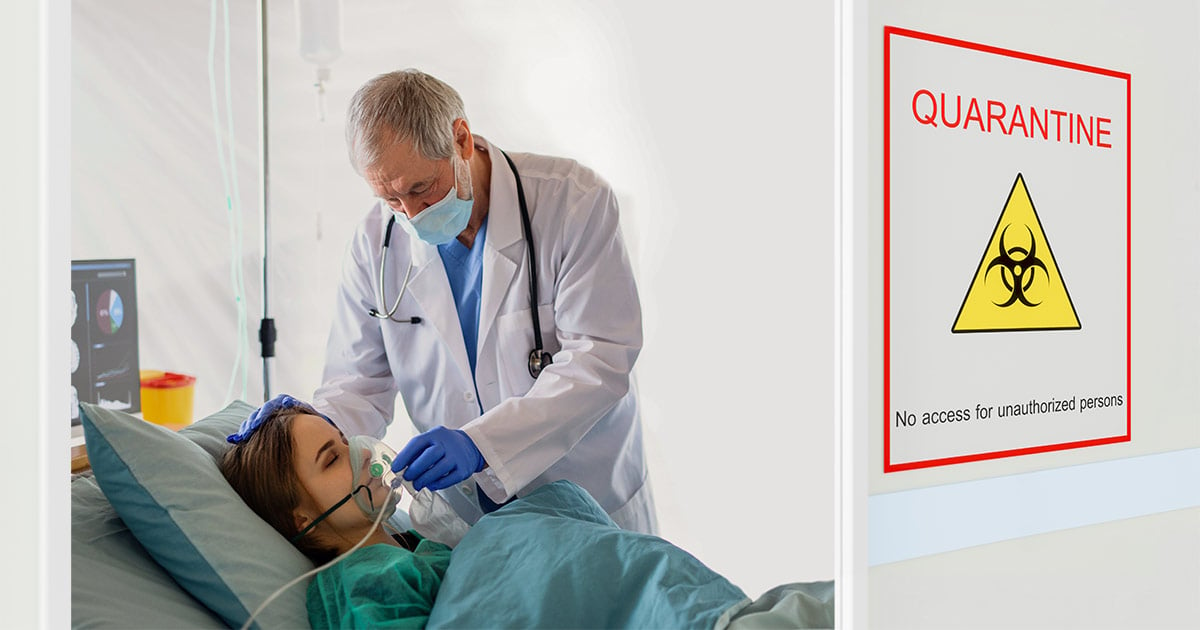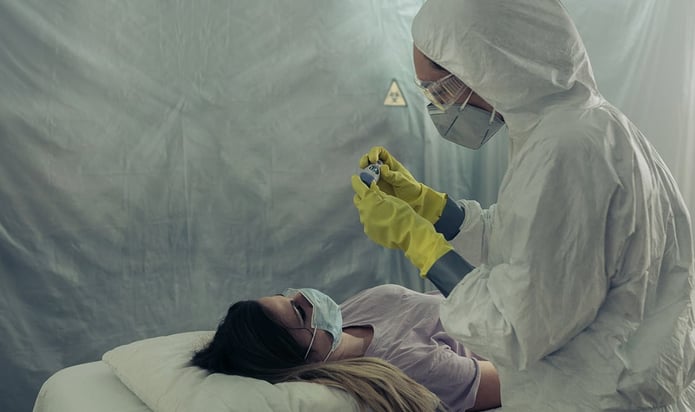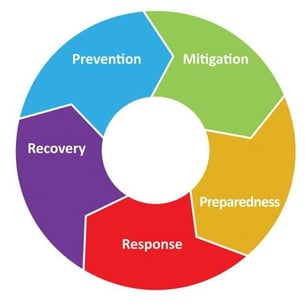Pulsara Around the World - 2025 Recap and January 2026
December Recap After an incredibly busy events year with 102 conferences, trade shows, and sponsorships, December was on the slower side for us, with...

EDITOR'S NOTE: Special thanks to Justin Baker for writing today's blog post. You can connect with him on LinkedIn.
If you had asked any U.S. healthcare facility in 2019 or early 2020 if they were prepared for any emergency, their answer would likely have been yes. After all, The Centers for Medicare and Medicaid Services (CMS) enacted a rule to establish national emergency preparedness requirements to ensure adequate planning for both natural and man-made disasters. This rule also established coordination with federal, state, tribal, regional, and local emergency preparedness systems. The requirements apply to all 17 provider and supplier types, too.
With these guidelines in mind, most facilities would have told you that they were prepared for any situation. However, this was before COVID-19 struck, crippling both the nation and the healthcare industry.
As the pandemic worsened globally, it quickly became evident that the world was dealing with an unprecedented event that many in our lifetime had never dreamed of, let alone dealt with. Facilities throughout the United States were left with staffing shortages due not only to their staff becoming ill with COVID, but also staff leaving for better financial opportunities with other companies. Where a nurse might normally take home around $800 per week at her job, traveling nursing companies offered anywhere from $5000 to $10,000 per week at the height of the surge. For thousands of clinicians—overworked, understaffed, and with limited PPE—this was a clear opportunity to take advantage of. "I was not sleeping and having the most anxiety in my life," said intensive care nurse, Claire Tripeny. "I'm like, 'I'm going to go where my skills are needed and I can be guaranteed that I have the protection I need.'" All of these factors have severely taxed the healthcare system in the U.S.

There will be many lessons learned when we’re able to look back on this pandemic. Hospitals and EMS services have had to adapt to and embrace many new ways of delivering care and treatment to patients. Healthcare facilities will also have to ask if the five phases of emergency management are—and were—properly in place for an event of this magnitude. Unfortunately, not many facilities in the United States had planned for a pandemic of this nature or duration. Having clear strategies in place will be foundational for future large-scale disaster preparedness—from procuring PPE to having solid interorganizational and cross-facility care team communication systems already set up. This is where implementing The Five Phases of Emergency Management really comes into play.

Prevention focuses on the creation of plans, training, and exercises well ahead of disaster to prepare your organization. Emergency planning activities allow the organizations to reduce loss of life and sustain environmental challenges by developing organization-specific plans.
Ahead of the COVID-19 pandemic, most facilities did not have a plan in place for a viral infection of this magnitude, thus leaving them to scramble and develop plans as the events unfolded. No one was prepared for the number of affected patients, nor the number of deaths.
These are activities that allow organizations to reduce the loss of life and physical assets such as buildings and supplies that will lessen the overall effect of the disaster on a facility and community as a whole.
Preparedness encompasses the continuous cycle of activities such as emergency planning, staff training, exercising, assessment, and remedial actions. Preparedness is building that personal and team "muscle memory", ready to be quickly and easily activated when emergency strikes.
Response refers to how organizations respond to whatever challenges the disaster brings. This includes supply chain interruptions, changes in service delivery, or day-to-day staffing. As healthcare facilities respond to these disasters, they must use all of their emergency preparedness tools, including emergency plans, policies, and procedures to respond to the disaster at hand.
As the events of the current pandemic began to unravel, many facilities found themselves dealing with staffing shortages, supply chain interruptions, and worldwide PPE shortages. This left many facilities relying on state and federal partners to help bridge the gaps. Facilities were short-staffed due to illness, openings, and sudden overwhelming surges of patients. To combat these challenges, many new plans had to be developed and staffing models—including credentialing of medical staff—had to be changed to allow for the use of travel staff.
Once the main part of the crisis is over, the recovery phase can begin. Recovery focuses on restoring critical business functions to stabilize day-to-day services and increase capacity to continue to serve their communities after the disaster. The recovery phase allows organizations to return to a normal service level as soon as possible.
As we continue to recover from the COVID-19 pandemic, many of our current processes and practices will need to be reexamined. Many healthcare facilities have dealt with things they had never seen before, such as mass fatalities and significant patient surges. Many rural or critical access facilities found that they were not able to just call the local receiving hospital that they normally use to transfer patients; instead, they had to call facilities that were hours away—or even across state borders—in order to secure placement for these critically ill patients. Some facilities even found themselves caring for critical patients without the proper resources or supplies needed to do so.
As we continue to move forward, we must also consider the potential ramifications on the physical and mental health of our healthcare providers, as they have dealt with hazardous conditions, staffing issues, PPE shortages, and mass casualty during this pandemic. Recovering and learning together from this extraordinary challenge, the future will be safer and brighter for all.
Emergency preparedness in the midst of a pandemic is a challenge. Learn how Austin-Travis County EMS used Pulsara as part of their COVID-19 emergency preparedness strategy.

December Recap After an incredibly busy events year with 102 conferences, trade shows, and sponsorships, December was on the slower side for us, with...

Editor's Note: In July 2025, EMS1 and Fitch & Associates released their annual EMS trend survey, What Paramedics Want, proudly sponsored by Pulsara....
![[PRESS RELEASE] Published Research Finds Up to 31% Faster STEMI Treatment Times in Rural Hospital Setting with Pulsara](https://www.pulsara.com/hubfs/_1_website-page-blog-assets/pulsara-hosp-teams-assign-cardio-stemi-rn-1200x701.jpg)
Published research shows how using Pulsara, alongside standardized field activation and a focus on stakeholder relationships, improves STEMI care and...